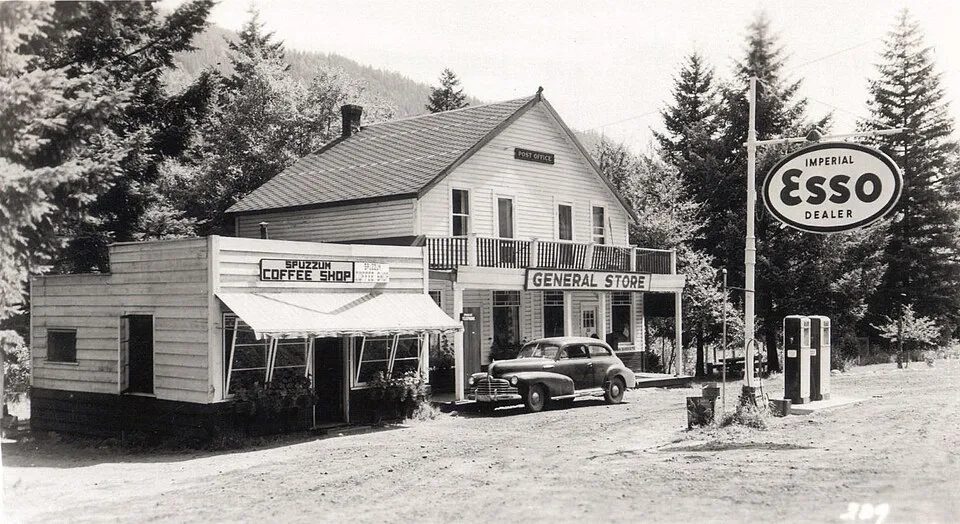Fueling Progress: Early Gas Stations in the USA and Canada in the Early 20th Century
A New Era of Mobility
In the early 1900s, automobiles were no longer a rare sight — they were becoming a symbol of modernity and progress. But cars needed fuel, and the infrastructure to keep them running had yet to be developed. Out of this necessity, the first gas stations began to appear across North America. These early filling stations were not just places to refuel — they became local landmarks, social hubs, and architectural curiosities that reflected the optimism of the age.

Early gas station in Minneapolis, 1927. License: Public Domain. link
Service Stations as Community Hubs
The concept of a “service station” was new. It wasn’t just about gasoline; customers expected tire repairs, oil checks, and sometimes even a friendly conversation with the station owner. In Canada, stations like the British-American Gasoline Service on Queen Street West became familiar meeting points. Drivers would stop not only to refuel but also to catch up on local news and share travel stories. The modest architecture often featured decorative elements that gave each station a unique charm.

British-American gas station in Toronto, 1920. License: Public Domain. link
Rural Stops and General Stores
Not all fuel stations were in bustling city centers. In remote areas of Canada, such as Spuzzum, British Columbia, a single general store often doubled as the only refueling point for miles. These rural stations were lifelines for travelers, farmers, and delivery drivers. Many were family-run businesses that served as post offices, supply depots, and community meeting spots all at once.

Spuzzum General Store in 1952, functioning as both a shop and fuel station. License: CC BY 1.0. link
The Art of Branding: Dome Oil and Marland Stations
Branding was crucial in the competitive gasoline market. Companies like Dome Oil Co. in Maryland designed eye-catching signage and decorative facades to attract drivers. Similarly, Marland Oil stations in the 1920s featured distinctive architecture and uniformed attendants — giving customers a sense of trust and professionalism. The experience of refueling was carefully crafted to make motorists feel part of an exciting, modern movement.

Dome Oil Co. station in Maryland, 1921, showing pumps and prominent branding. License: Public Domain. link
Public Transportation Meets Private Fueling
Gasoline wasn’t just for private automobiles — buses, delivery trucks, and other commercial vehicles needed fuel too. In 1928, some stations even served public transit routes. One historic photograph shows a bus on the short-lived QUEEN route stopping for gas, a rare glimpse into the connection between early gas stations and urban transportation systems.

1928 bus on the QUEEN route making a refueling stop. License: Public Domain. link
The Rise of Purpose-Built Stations
By the late 1920s, gas stations began to evolve from makeshift pump setups into purpose-built service centers. The Capitol Hill Service Station in Seattle, for example, boasted a striking facade and dedicated service bays — signaling that the gasoline business had matured into a full-fledged industry.

Capitol Hill Service Station, circa 1928, with multiple pumps and garage bays. Public Domain. link
Canadian Heritage: White Rose Gasoline
One of Canada’s most recognizable early fuel brands was White Rose Gasoline. Known for its clean and stylish stations, White Rose became a household name, especially in Ontario. Their stations often had whitewashed walls, bright signage, and uniformed staff — projecting an image of reliability and cleanliness.

White Rose Gasoline Service Station in Canada, circa 1920. License: Public Domain. link


